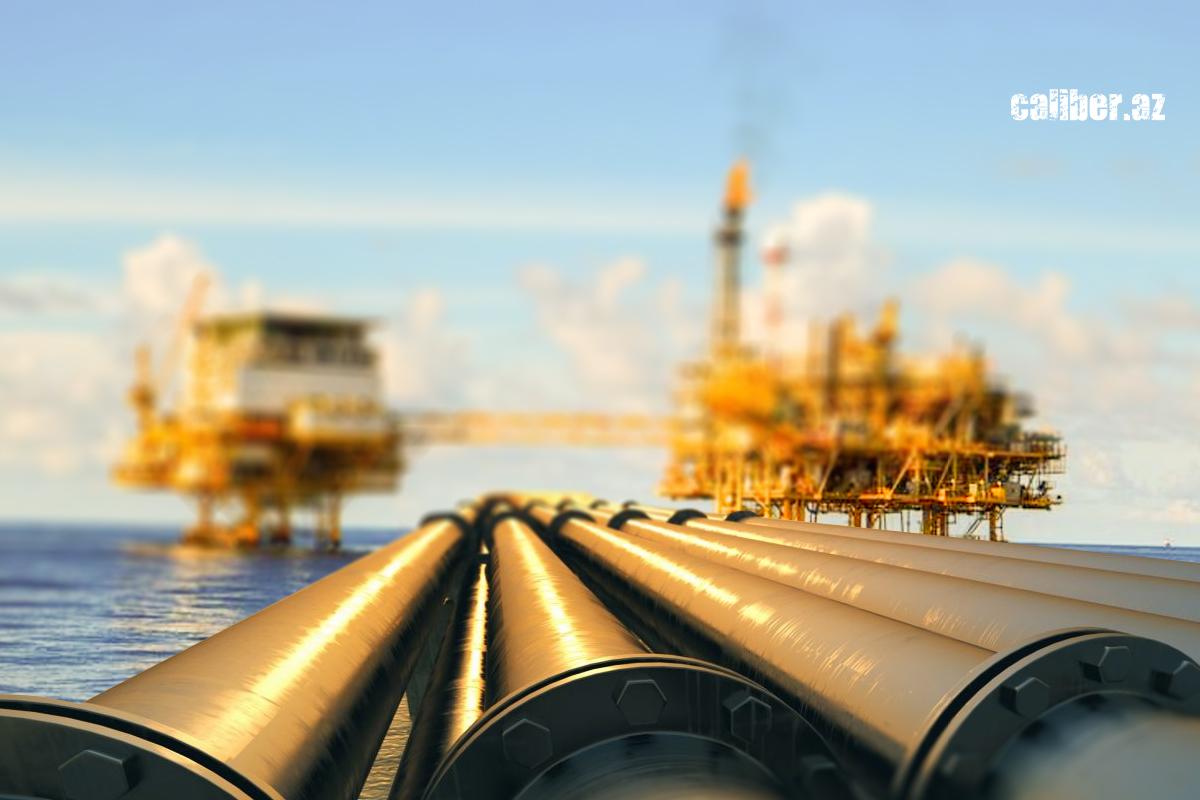EU gas shortage: Azerbaijan steps in Analysis by Khazar Akhundov
The traditional energy partnership between Europe and Azerbaijan has, in recent years, grown most actively through the expansion of infrastructure and the increased transit capacity of the Southern Gas Corridor (SGC) pipeline system. The number of Balkan countries importing Azerbaijani natural gas continues to rise.
To meet this growing demand, the long-term capacity of a key SGC component — the Trans Adriatic Pipeline (TAP) — is set to increase by 1.2 billion cubic meters per year starting in 2026. This move comes at a crucial time, as seasonal factors have pushed gas demand higher across several European countries while storage levels are declining. Consequently, market prices for natural gas have seen a slight uptick since late November.
On the European gas market, after a 2% price drop in October to around $385 per thousand cubic meters, the trend has reversed. Data from the London ICE exchange for gas futures, based on the TTF index — Europe’s largest hub located in the Netherlands — show that prices have risen in recent days.
According to Reuters, gas prices in the Netherlands and the United Kingdom have increased since November 17, as cold weather has driven higher demand for heating. This is expected to result in larger withdrawals from underground gas storage (UGS) facilities. In the UK, forecasts overwhelmingly indicate a “bullish” trend, primarily due to a surge in residential demand.
With no additional exports from Norway anticipated and supplies of expensive liquefied natural gas already at their maximum, the overall system balance is likely to tighten. Gas reserves in UGS facilities are expected to fall further over the next two weeks.
Overall, according to Gas Infrastructure Europe, EU gas storage facilities were 82.02% full at the beginning of November, compared with 92% at the same time last year. Considering meteorological forecasts, this poses certain risks, as this winter may turn out to be unusually cold.
Moreover, by November 1, more than 1.8 billion cubic metres of gas had already been withdrawn from storage — and this is despite the European Commission’s requirement that EU storage facilities be filled to at least 90% before the start of winter. Meeting this target is no simple task, as this year, due to the complete halt of Russian gas transit to the EU via Ukraine’s gas transmission system, Europe has had to fill its storage mainly through imports of expensive liquefied natural gas (LNG).
The surge in LNG demand is driving up prices, including a significant increase at the U.S. Henry Hub gas distribution hub — nearly 40% over the past month — which also poses a risk to market quotations. Against this backdrop, it is unsurprising that, despite notable volatility on the gas market in 2025, the average gas price over the past ten months was 19% higher than in 2024.

It is also unsurprising that the current situation in Europe’s gas market is increasing the need for stable supplies of pipeline natural gas from alternative sources. In this regard, Azerbaijan's role in ensuring Europe’s energy security is difficult to overestimate.
In recent years, Azerbaijan has actively expanded economic ties with countries in Southern and Eastern Europe, with the Southern Gas Corridor (SGC) pipeline system — stretching 3,500 km from Azerbaijan’s offshore fields to Italy and several Balkan countries — serving as the main driver of these relations.
Following the signing in Baku in July 2022 of the “Memorandum of Understanding on Strategic Energy Partnership between Azerbaijan and the EU,” which envisages doubling Azerbaijani gas exports by 2028, projects were launched to expand the capacity of the SGC and the Trans Adriatic Pipeline (TAP). Along several routes, Azerbaijan’s partners have achieved significant progress in recent years: compressor stations and gas distribution networks in Southern and Eastern Europe are being modernised, and the construction of new interconnectors is being accelerated.
Notably, over the past five years, the number of companies registered to transport gas through the TAP system has grown from three to forty-six. As a result, in addition to Italy, Greece, Bulgaria, Romania, Hungary, and Serbia, Azerbaijani gas supplies were extended last year to Slovenia, Croatia, and Slovakia. Through the Trans-Balkan Pipeline, pilot deliveries to Ukraine were also initiated in July of this year.
Exports to Albania are planned to be established by the end of 2026. Meanwhile, Azerbaijan’s State Oil Company (SOCAR) is participating in a hybrid gasification project in North Macedonia and intends to begin supplying pipeline gas to that market in the near future, following the construction of a new interconnector.
Since the first volumes of “blue fuel” began flowing at the end of December 2020, nearly 53 billion cubic metres of Azerbaijani gas have been delivered to Europe. The bulk — 44.6 billion cubic metres — went to Italy, around 5 billion cubic metres to Greece, and 3.4 billion cubic metres to Bulgaria.
Overall gas exports, including deliveries to Türkiye, Georgia, and Syria in addition to Europe, now account for roughly one-third of Azerbaijan’s total exports. In the first ten months of this year, natural gas represented 34.28% of the country’s exports to foreign markets. According to customs data, Azerbaijan exported nearly 20.649 billion cubic metres of natural gas between January and October, with a value increase of 8.3% compared to the same period last year.

Steps to increase Azerbaijani gas supplies require equally significant efforts to expand the capacity of the Southern Gas Corridor (SGC) pipeline system components.
“The long-term capacity of the Trans Adriatic Pipeline (TAP) will be increased by 1.2 billion cubic metres per year starting in 2026: of this volume, 1.04 billion cubic metres per year are reserved for deliveries to Italy, and 0.16 billion cubic metres per year to Albania,” Murad Heydarov, Chairman of the TAP Board of Directors, told local media.
According to him, the long-term capacity of TAP, currently 10 billion cubic metres per year, can be gradually increased to more than 20 billion cubic metres. In line with the commercial commitments made during the 2021 market test, the first stage of TAP’s expansion completed design work at the Kipoi border compressor station in Greece, where a new 15 MW compressor unit was commissioned, enabling an additional 1.2 billion cubic metres per year.
The expansion works, launched in January 2024, were completed safely, ahead of schedule, and within budget, without any interruption to ongoing gas transportation.
As new gas contracts are signed in Europe, it is necessary to increase production in Azerbaijan steadily. This effort has generally been successful, with domestic “blue fuel” exports reaching 25 billion cubic metres in 2024. Between January and October 2025, the country produced over 42.128 billion cubic metres of natural gas, with commercial gas production exceeding last year’s figures by 1.7%.
Given the rising demand from Azerbaijan’s trading partners, production needs are increasing rapidly. In this context, SOCAR, in partnership with the operator company bp-Azerbaijan, is undertaking major efforts to expand output at the country’s main offshore gas field — Shah Deniz. Between 2029 and 2030, the Shah Deniz Compression (SDC) autonomous compressor platform project is expected to be completed, covering the Shah Deniz Alpha and Shah Deniz Bravo platforms, while the Sangachal terminal infrastructure will also be expanded.
In the long term, gas production in Azerbaijan could increase significantly with the planned commissioning of the Shafag-Asiman block, as well as major gas-condensate fields such as Umid-Babek and Karabakh, whose combined capacity together with the Absheron reserves, according to SOCAR specialists, exceeds 1 trillion cubic metres of gas.
Expansion of gas production in the more distant future is also supported by last year’s start of drilling the first production well (deep-gas) in the deep layers of the Azeri-Chirag-Gunashli (ACG) block. Overall, according to new estimates, Azerbaijan’s total projected “blue fuel” reserves are around 4 trillion cubic metres.








